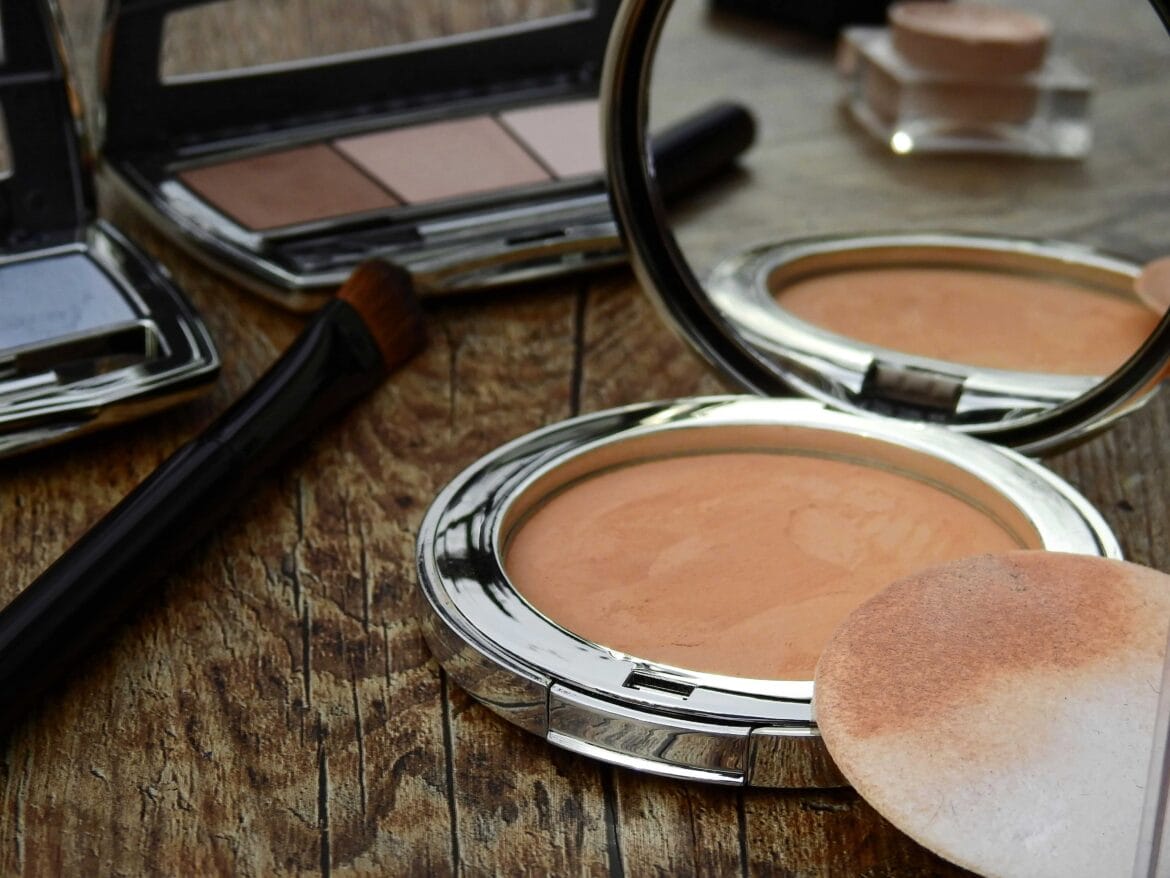We believe that smooth, glowing skin is the bedrock of any makeup look! From our experience testing countless products over the years, finding the right japanese foundation is somewhat complex: knowing you skin’s natural charm while addressing specific concerns like dark spots.
Japanese foundations, in particular, stand out for their high-quality ingredients and gentle formulation.
They tend to have minimal negative impact on your skin.
We’ll share everything we know about choosing the perfect foundation from Japan. Different foundation types, color matching, and the concept of personal color, all for you to find the best one that fits your needs.
And know a little mor about what are you applying to your face daily too!
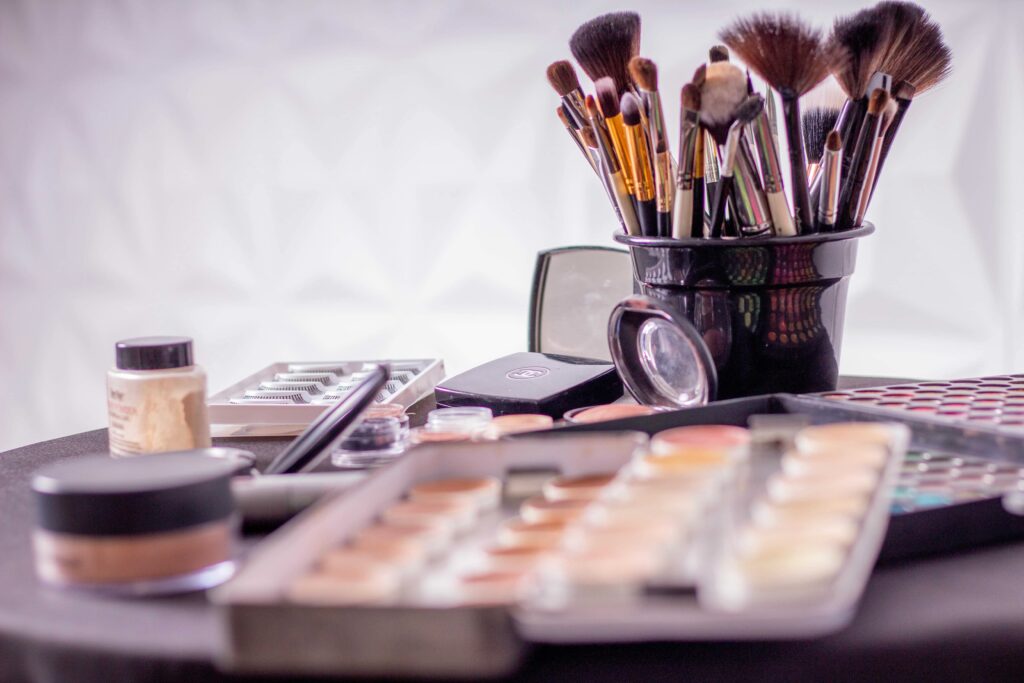
1 Why the Right Japanese Foundation Matters
Skin typically reaches its peak of vitality in our 20s, and as we grow older, it becomes more prone to visible issues—like new spots and an overall dullness.
While good skincare helps, selecting a foundation that matches your unique skin type and tone can do wonders in keeping your face looking youthful and fresh. The right foundation:
- Covers visible imperfections, such as blemishes, redness, or fine lines.
- Contributes to an even, balanced complexion.
- Provides the desired finish—from dewy radiance to soft-matte elegance.
- Offers skincare benefits (hydration, sun protection, etc.) when formulated with nourishing ingredients.
1.1 Visualizing Your Ideal Skin
Before picking up any foundation, it’s helpful to imagine the kind of skin you want.
From our firsthand trials, narrowing down what finish you prefer ensures you’ll love (and actually use!) your foundation. Here are the two most common finishes:
- Glossy or “Lustrous” Skin: A youthful glow that looks moisturized and translucent. Perfect if you love a bright, almost “wet” sheen that screams hydration and healthy vitality.
- Matte Skin: An elegant, shine-free finish that feels velvety and refined. It often suits professional settings or those who prefer a more understated, polished look.
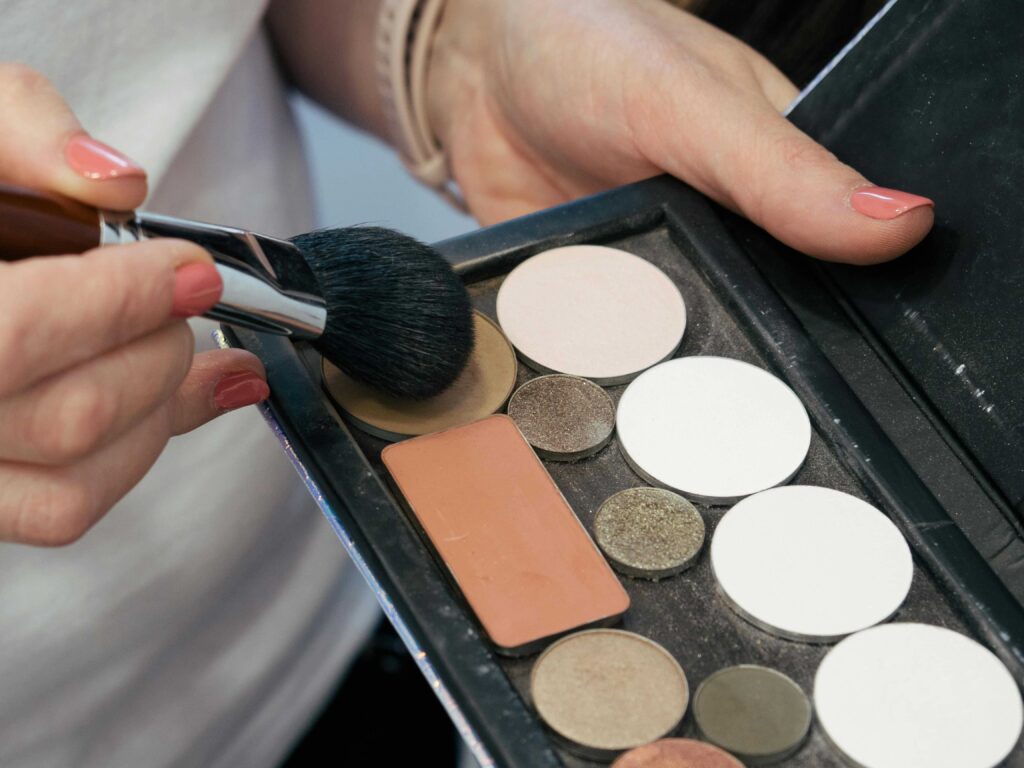
2. Understanding Different Foundation Types
The style of foundation you choose matters as much as the color. Japanese brands offer a wide variety of consistencies, each with its own benefits. We typically categorize them by their texture and recommended skin type.
Sometimes you might opt for one kind in colder weather and another in warmer seasons.
2.1 Watery Foundation
This type has a fluid, lotion-like consistency that often delivers ample moisture while remaining lightweight on the skin.
Some watery foundations include “negative ion oxygen water” or similar hydrating bases, creating a barely-there feel that we love when we want to let our natural complexion shine through.
- Great for all skin types—especially if you like a subtle, no-makeup look.
- Offers a luminous finish without feeling heavy.
- Applies quickly—ideal for busy mornings or quick touch-ups.
2.2 Liquid Foundation
Liquid foundation has a consistency that’s slightly thicker than watery formulas but is still quite spreadable.
It’s widely popular for its ability to balance coverage and hydration. Many Japanese liquid foundations boast skincare ingredients to keep skin feeling fresh.
- Perfect for dry or combination skin thanks to higher moisture content.
- Usually blends in well, helping achieve a polished finish without caking.
- Often infused with beauty-enhancing components like hyaluronic acid or botanical extracts.
2.3 Cream Foundation
Cream foundations typically have higher oil content. We’ve found them invaluable for covering stubborn dullness, fine lines, and pores—ideal if you’re seeking a plump.
- Excellent for drier skin types or those wanting maximum coverage.
- Helps lock in moisture for hours on end.
2.4 Cushion Foundation
A cushion foundation is a liquid formula housed in a compact, usually with a saturated sponge. This type is well-known for delivering hydration and a pleasant, cooling sensation upon application.
Popular for busy folks since it’s easy to carry around (looking at you, salarymen).
- Highly moisturizing and convenient for quick touch-ups.
- Often has buildable coverage, from light to medium.
- Favored by those with normal to dry skin who love a dewy finish.
2.5 Powder Foundation
Powder foundations generally yield a matte, smooth look. They’re often formulated to control shine by absorbing excess sebum, which is especially helpful for oily or acne-prone skin.
- Ideal for individuals with oily skin who want to prevent midday shine.
- Easy to apply—great for beginners.
- Creates a more “soft-focus” finish that helps camouflage large pores.

3. Choosing the Right Color
Foundations typically come in a range of shades measured along two axes: brightness (light vs. dark) and color (pinkish vs. yellowish).
Since most Japanese skin tones are either pink- or yellow-based, many Japanese brands cater to these subtle differences.
3.1 Matching Your Face and Neck
We’ve all seen it: the dreaded foundation “mask” effect where someone’s face color is starkly different from their neck.
You should avoid this by selecting a foundation that matches the skin from your jawline down to your neck. If the color blends seamlessly on that area, good.
Shades often have labels like “Natural White,” “Light Ochre,” “Dark Ochre,” or “Beige.”
Experiment in natural lighting by dabbing a small amount on your jawline and waiting a few minutes to see if it oxidizes or changes color.
3.2 Considering Your Personal Color
A popular framework in Japan is identifying whether you are “blue-based” (cool) or “yellow-based” (warm). Knowing your personal color can help you pick foundation and even clothes that flatter your complexion.
- Blue-based (Cool): Hair and eyes often have ashy or dark undertones. Cool shades—like pinks and blues—tend to look striking against your skin. Pink foundations can brighten your complexion.
- Yellow-based (Warm): Hair and eyes might be naturally warm or golden. Warm hues—like yellows and browns—harmonize with your features. Yellow foundations are the go-to here.
If you want the full scoop on your personal color type, seek a professional consultation.
Otherwise, a quick self-check in natural light can give you a good hint about which tones suit you best.

4. Don’t Forget Lighting Conditions
One often-overlooked detail is the lighting of the space where you’ll spend most of your time.
For instance, warm candlelight or soft yellow bulbs may make a cooler foundation look off or vice versa. Daylight and bright fluorescent lighting demand more neutral or golden-beige shades to avoid looking washed out or overly pink.
We’ve experienced how dramatic the difference can be, so always consider where you’ll be and choose accordingly.
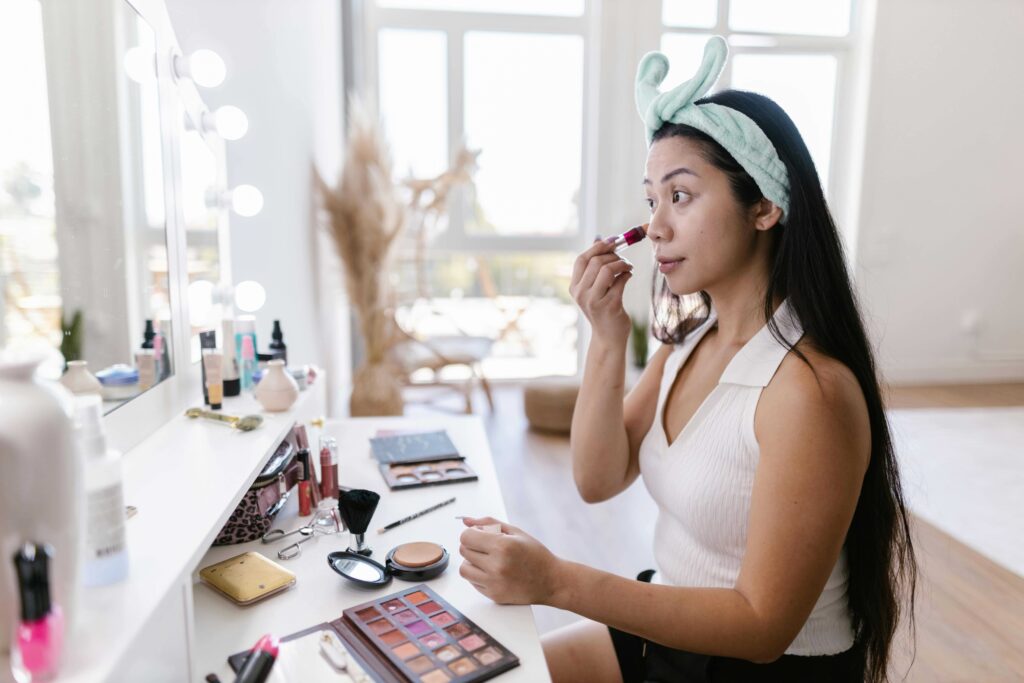
5. Our Hand-Picked Recommendations
Having tried multiple Japanese foundations, here are some of our favorites that stand out for their gentle ingredients, coverage capabilities, and seamless finish.
5.1 Clear Beaute Foundation (Powder Type)
Great for: Oily skin or anyone who struggles with excessive sebum and unwanted shine. Perfect if you love a matte, porcelain-like finish.
- Key Benefits: Formulated with serum-grade components dissolved into a fine mineral powder that reflects natural light. This helps maintain a smooth, bright, and clear look.
- Staying Power: Pigments are coated to resist sweat and sebum, preventing midday fade.
- User-Friendly Puff: The soft, custom puff feels almost like it’s cushioning your skin as it applies the product.
How to Use: After prepping your face with skincare and a primer, apply a small amount of Clear Beaute Foundation to the included puff.
Gently dab and blend outward from the center of your face. For extra coverage on spots or blemishes, pat a bit more on those areas.
5.2 Water-Based UV Foundation (Watery Type)
Great for: Normal and combination skin types, or anyone seeking a fresh no-makeup look with ample hydration.
- Key Benefits: Its lotion-like consistency feels light as air and blends effortlessly. Often infused with skin-friendly ingredients like hyaluronic acid and licorice derivatives to offer a soothing touch.
- Natural Transparency: Leaves behind a subtle glow that mimics healthy, bare skin.
- Long-Lasting Moisture: Won’t leave you feeling dry or tight as the day goes on.
How to Use: Dispense a coin-sized amount into your palm. With your fingertips, apply an even layer across your face, starting from the center and working outward. Pat gently over areas with pronounced pores to help conceal them. We especially recommend this formula during summer months.
5.3 Deep Plus Creamy Base (Cream Type)
Great for: Dry skin, or those who want to thoroughly conceal dullness, blemishes, and uneven texture while achieving a lustrous glow.
- Key Benefits: Contains Coenzyme Q10 to help plump the appearance of skin. Free of harsh UV absorbers, it’s gentle enough for individuals with delicate skin barriers.
- Coverage & Tone-Up: Addresses discoloration, fine lines, and pores all in one go.
- Multi-Functional: Works as a serum, tone-up product, and foundation. It’s a triple threat that saves time and keeps your routine streamlined.
How to Use: After skincare and primer, take a pearl-sized amount and warm it between your fingers. Gently spread from the center of your face outward. Blending a thin layer around the nose and mouth helps prevent product buildup.
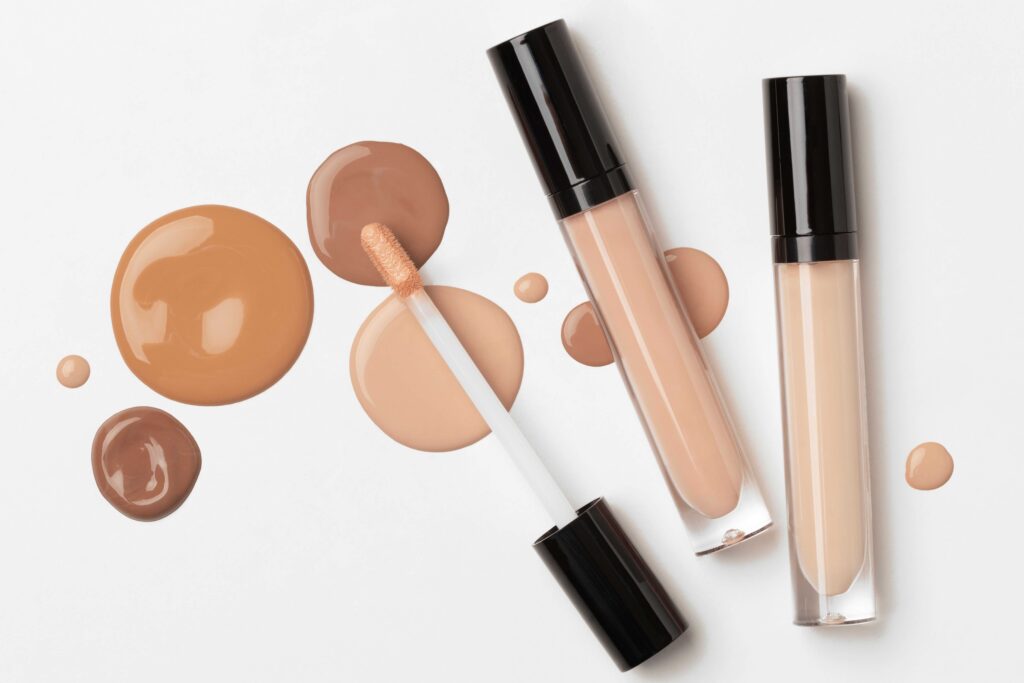
6. Additional Tips for Choosing Japanese Foundations
- Test in Natural Light: Whenever possible, swatch the product near a window or in bright daylight to see if it really complements your skin tone.
- Consider Seasonal Shifts: You might need a lighter shade (or formula) in the cooler months and a darker or more sebum-controlling one in the hot, humid summers.
- Blend, Blend, Blend: The best coverage looks seamless. Use a puff, brush, or your fingertips to softly diffuse any harsh lines.
- Spot Conceal: If you have specific trouble spots, layering a concealer on them first often means you can use less foundation overall—a more natural result.
We’ve absolutely adored testing and using these foundations in our own daily routines. If you’ve been feeling uncertain about which formula to invest in, we hope these tips and recommendations can guide you toward your perfect match!
FAQ
What makes a Japanese foundation different from other foundations?
Japanese foundations often prioritize gentle formulas and skin-friendly ingredients. Many brands use innovative moisturizing components and refined pigments, helping the product blend effortlessly for a natural look. This focus on subtle coverage and hydration makes a Japanese foundation a popular choice for achieving a smooth, radiant finish.
Is a Japanese foundation better than a Korean foundation?
“Better” is subjective and depends on personal preference, skin type, and desired finish. Japanese foundations typically emphasize lightweight formulas with a skin-first approach, while Korean foundations often highlight trendy, dewy textures with strong skincare benefits. It’s best to sample products from both regions to see which one aligns more with your individual needs.
Which Japanese foundation works best for oily skin?
Powder-type or oil-control Japanese foundations generally suit oily skin because they absorb excess sebum and reduce shine throughout the day. Look for formulas specifically labeled as “sebum-resistant” or “matte finish” to keep your complexion looking fresh and balanced.
How do I pick the right shade in a Japanese foundation?
When selecting a shade, swatch the product around your jawline or neck to ensure it seamlessly matches both your face and neck tones. Remember that many Japanese foundation brands categorize shades by brightness and undertones—pink (cool) or yellow (warm)—so choose a hue that aligns with your natural skin undertone for the most flattering result.
Does a Japanese foundation provide enough coverage for aging or mature skin?
Yes. Many Japanese foundation formulas include nourishing ingredients like hyaluronic acid or collagen to hydrate and plump the skin. For mature skin looking to cover fine lines and dullness, a cream or liquid Japanese foundation can offer buildable coverage while maintaining a smooth, youthful glow.
Table of Contents
